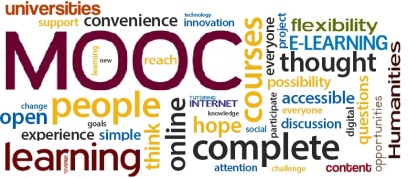MOOC your way to success
 Let me begin by asking two questions?
Let me begin by asking two questions?
- Have you ever wished to undergo a course and discovered that it’s not available in your city?
- Have you ever said to yourself “How I wish I had the time to study!”?
Till the first decade of the 21st century you would have been excused because access to education and skill enhancement courses was difficult and even if you were lucky to live in a city where the course was available the class wasn’t at a convenient time. So, most learners had to put their self-development plans on hold.
In the last century, you had to be physically present in the classroom at a pre-designated time to learn from a teacher and you usually did one course at a time. Then came distance education in the form of correspondence courses and open universities. These offered the first level of freedom to the learner, but they didn’t have widespread acceptability because the best universities weren’t offering the courses and often there wasn’t a teacher or expert to clear the learner’s doubts.
With rapid computerization in the late 80s and growth of the internet in the late 90s we saw courses being offered in the form of video classrooms or multimedia CDs – education and skill enhancement were reaching a wider audience, but the experience wasn’t very satisfactory and costs were prohibitive.
And then in 2006 came a huge jump in online education in the form of MOOC (Massive Open Online Course). Stanford University one of the best Universities in USA decided to offer its courses to the public in the form of internet based classroom. They offered blended learning solutions that had text-based learning material interlaced with videos and each learning module had assignments to check how much the participant had learned. The submitted assignments were scored mostly by the machine and only the final assignment or test had a teacher scoring it. To keep the learner engaged these courses also had a Facebook-like discussion board where learner discussed the subject with their peers and teachers. You got marks even for submissions made in the discussion board. So the learner was immersed in the course in every possible way – he or she was reading, hearing, seeing, discussing and practicing. The best part being that all this was happening seamlessly – the learner can easily move from text to video to discussion and back. This was made possible with the help of better technology, larger bandwidth for transmission of information and higher storage facility in the cloud (internet).
Speaking at TED, Anant Agarwal (a Computer Science expert at MIT (Boston) and one of the designers of the popular MOOC named edX) said that the first course they offered online had over 1.55 lakh registered learners from 162 countries.
What made MOOCs interesting? Well, these are the leading reasons:
- For most of the courses there was no prior qualification needed to register
- Most courses were free of charge and even if there was a fee it wasn’t much (Coursera, another popular provider, charged in the range $60 – 200 (Rs. 4000 to 13,500).
- Quite often the fee was charged only if the learner needed a certificate at the end of the course.
- Just about every stream of knowledge was being offered – Science, Math, Economics, History, Computing, Commerce, Business Management, Political Science, Languages and more. (in multiple language options).
Most major universities in the world were offering courses – even the IITs, BITS (Pilani) and ISB (Hyderabad) have courses on the famous MOOC platforms. (Most leading MOOC platforms are joint ventures of multiple partner Universities.)
The magic of MOOC is that the classroom is “your bedroom” and the time at which the course is available is ”when you are free”. You were learning the course of your choice at your pace. Do you have any excuse left? J
Some courses gave credits, which mean that if you were to take a full-time course on the same subject at the University offering the MOOC course you would be exempt from redoing the credits you have already achieved.
The biggest prerequisite for a MOOC learner is … a free mind!


Recent Comments